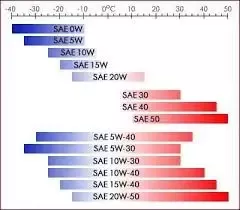What are the Symptoms of Bad Engine Timing? The engine timing in a car is critical for its smooth operation. It ensures that the engine’s valves open and close at the right time during each cylinder’s intake and exhaust strokes. When the engine timing is off, it can lead to a host of issues that can affect the performance and longevity of the engine. In this article, we will explore the symptoms of bad engine timing and how to recognize them.
Check Engine Light Illuminates
One of the most common signs of bad engine timing is the illumination of the check engine light on the dashboard. When the engine timing is off, the engine control unit (ECU) may detect irregularities in the engine’s operation and trigger the check engine light to alert the driver of a potential problem. It is important not to ignore this warning and have the vehicle inspected by a qualified mechanic as soon as possible.
Unusual Sounds While the Car is Running
Another symptom of bad engine timing is the presence of unusual sounds coming from under the hood while the car is running. These sounds may include ticking, rattling, or knocking noises, which can indicate that the engine timing is off. These noises are often attributed to the improper synchronization of the engine’s components, such as the camshaft and crankshaft, due to bad timing.
Engine Misfires
Bad engine timing can also lead to engine misfires, where the air-fuel mixture in the cylinders fails to ignite properly. This can result in a rough or uneven running engine, accompanied by a noticeable loss of power and efficiency. Engine misfires can cause the vehicle to shake or jerk during acceleration and can lead to further damage if not addressed promptly.
Fast Crank, No Start
In some cases, bad engine timing can prevent the engine from starting altogether. When the timing is off, the engine may crank faster than usual but fail to start, leaving the driver stranded. This can be a frustrating and inconvenient situation, especially if the timing issue occurs unexpectedly.
Rough Idling
A car with bad engine timing may exhibit rough idling, where the engine runs unevenly or inconsistently while at a standstill. This can manifest as a noticeable vibration or shaking felt inside the car, indicating that the engine is not operating as smoothly as it should. Rough idling can be a clear indication of timing-related issues that require immediate attention.
Decreased Power and Acceleration
When the engine timing is off, the overall performance of the vehicle may suffer, leading to decreased power and acceleration. The engine may feel sluggish and unresponsive, especially during acceleration or when climbing inclines. This can impact the driving experience and may pose safety concerns, particularly when merging onto highways or overtaking other vehicles.
Increased Exhaust Emissions
Bad engine timing can contribute to increased exhaust emissions, as the engine struggles to burn fuel efficiently. This can result in the production of higher levels of harmful pollutants, such as carbon monoxide and hydrocarbons, which can have adverse effects on the environment and may cause the vehicle to fail emissions tests.
Engine Overheating
In some cases, bad engine timing can contribute to engine overheating, as the improper combustion timing can lead to excessive heat buildup within the engine. This can result in the engine running at higher temperatures than normal, potentially causing damage to various components and necessitating costly repairs if not addressed promptly.
Difficulty Starting the Engine
A car with bad engine timing may experience difficulty starting, especially when the timing issue is severe. The engine may struggle to turn over, or it may fail to start altogether, leaving the driver stranded. This can be a frustrating and inconvenient experience, particularly if the vehicle’s timing issues have not been diagnosed and resolved.
Visible Damage to Timing Components
In some instances, the symptoms of bad engine timing may be accompanied by visible damage to the timing components, such as the timing belt or chain. This can include fraying, cracking, or stretching of the belt, or signs of wear and tear on the chain. It is essential to inspect these components regularly and replace them as recommended by the manufacturer to prevent timing-related issues.
Read More: Is Engine Flush Good or Bad?
Conclusion
In conclusion, recognizing the symptoms of bad engine timing is essential for maintaining the health and performance of a vehicle. By being aware of these signs, drivers can take proactive measures to address timing-related issues before they escalate into more significant and costly problems. Regular maintenance and timely inspections by qualified professionals can help ensure that the engine timing remains in optimal condition, contributing to a smooth and reliable driving experience. If any of the aforementioned symptoms are observed, it is crucial to seek the expertise of a certified mechanic to diagnose and rectify the underlying timing issues. Ignoring the symptoms of bad engine timing can lead to further damage to the engine and compromise the safety and reliability of the vehicle.


